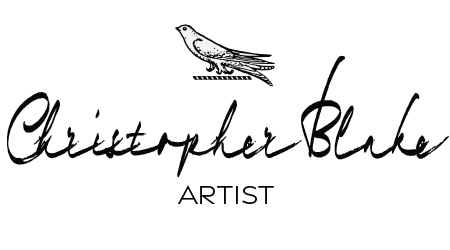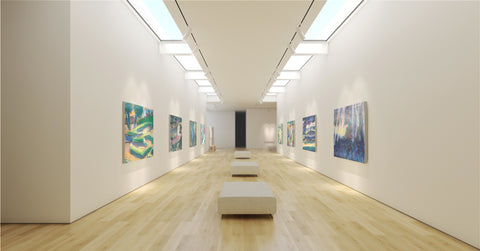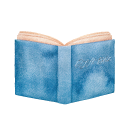About Christopher Blake
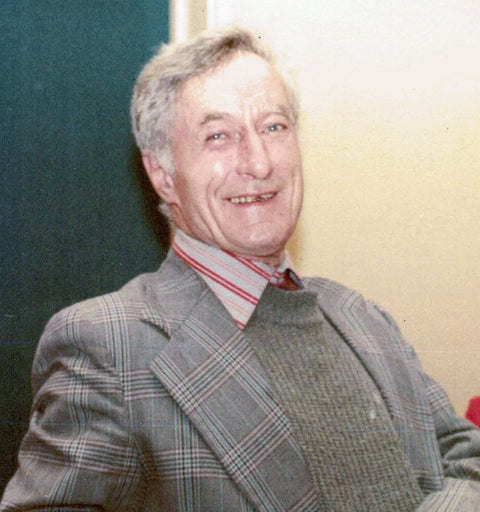
Born Shanghai, China
Born on 16 February 1930 in Shanghai, China, with his twin brother George Patrick Hamilton, to Mr. and Mrs. Thomas Blake; Christopher Blake’s interest in pencil and paint could be observed from an early age. At the age of 4 years, while living in Tianjin, China, Christopher would avidly apply colour to colouring in books featuring Chinese and Western characters. At the age of 9, he would illustrate war time scenes of military aircraft, German bombs and warships. He continued to further his artistic skills by taking lessons when visiting his Aunt Dorothea Maclagan, who was an established watercolour artist and a personal art tutor to Sir Winston Churchill’s children. During his childhood, he was exposed to numerous relations who were known for their artistic talent or Christian missionary work.
His father was an executive for the Asiatic Petroleum Company, a joint venture between the Shell and the Royal Dutch oil companies. The company operated in Asia in the early 20th century with its corporate headquarters on The Bund, Shanghai. A year after his birth, Christopher set sail with his family to England aboard the steamship Anchises, which 10 years later was later sunk in a German aircraft bombing off the Isle of Aran. The voyage took 42 days and stopped in Yokohama and Port Said along the way. He was introduced to his family in England while staying with his grandparents in Wimbledon, London. In October 1931, after a British summer, he returned to China with his family aboard the P&O steamship Rajputana, which 10 years later also sunk, off the coast of Iceland following German torpedo attack. Upon their return to China, the family moved to the North East city of Tianjin, where his father continued his work in the petroleum business. In their journals, he and his twin recount their enjoyment of visiting the local seaside town of Peitaiho, where they would avidly enjoy sailing together.
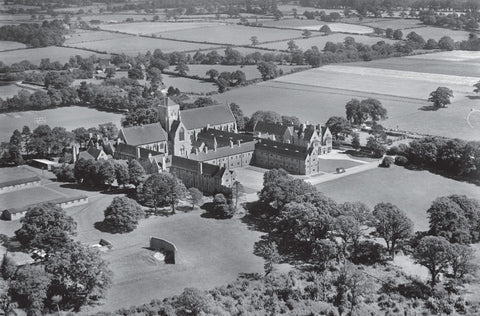
School To National Service
In December 1935, Christopher and family returned to England, where they settled down to life 4 years prior to the start of World War 2. In his journals, he recounts memories of living near the New Forest, visiting his Aunt Dorothea in Buckinghamshire and during the World War 2 getting up to mischief with unexploded munitions. In one extract, he recounts “we put our lives on the line many times and got away with it. We found numerous German antitank mines at Goblins Comb. We would place a mine on a disused road, fill the subsidiary cavity for detonators with gun cotton which we would find while playing. After lining the rim with plastic gelignite, we placed a hardened bitumen sack supported by a thick stick on top of the mine. We would witness the explosion from 80 yards, first seeing a column of black smoke followed by a muffled explosion. Risk is everywhere in life, but be careful.” After completing his schooling (1948) at Hurstpierpoint College in West Sussex, where Christopher and his twin were recognised for their rugby playing skills, Christopher sailed for East Africa to undertake national service where he served as a TMT (Technical Mechanical Transport) clerk working on weapons machinery. Similarly to many twins, he had formed a strong bond with his brother, and was separated from George who went to serve in the Middle East Land Forces as a tactical sketcher. The twins national service took them through the Middle East and North Africa, during which period both journaled their observations, some of which feature in Christopher’s paintings many years later. The twins returned to England two years later. Following Christopher's return from National Service, he undertook a course of study at Saint Martin’s School of Art in London.
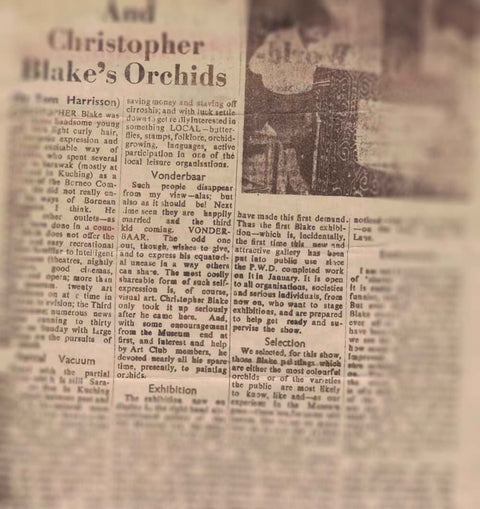
Sarawak, Borneo
Christopher had grown restless of his post National Service life in England and travelled to North Borneo to start his new line of work as a merchant for The Borneo Company. The Borneo Company was founded in London in 1856 by the first Rajah of Sarawak, James Brooke. Initially, it was given all rights in return for royalties to the Sarawak Treasury to “take over and work mines, ores, veins or seams of all descriptions of minerals in the Island of Borneo, and to barter or sell the produce of such workings”. The Borneo Company offices in Kuching from the 1950’s were located on the property now occupied by the Hilton Hotel Kuching which was a location Christopher would fondly recount in his journals “Anna and I would spend many an evening walking along the Kuching riverfront, adorned with its fleet of fishing boats, wooden houses built upon stilts from where hawkers ply their trade”. During the early years of The Borneo Company, it was entrusted to mine for gold in the Bau area as well as to print the currency of the Rajah. It had virtually similar functions and duties to that of the Crown Agents to the Monarchy of Great Britain. As such, all of the company’s managers and employees were expatriate English merchants and traders sent to North Borneo from the United Kingdom. It was not until the 1950’s that a few local Sarawakians were appointed to responsible positions of executives and managers; Christopher was responsible for mentoring many of them. By then the company’s scope and range of business had extended to travel and shipping, insurance and brokerage, as well as its main stay of import and export of all kinds of consumer and technical products. The brands that the company represented and were sole agents for were internationally recognised market leaders.
During the period Christopher lived in Kuching, in his spare time, he spent much of his time with local Dayak families, within the many longhouses in the Sarawak rainforest. His interest in the local flora and fauna brought about the start of a massive project, the painting of hundreds of botanical illustrations. Part of Christopher’s collection of paintings, which include exotic orchids, wild-flowers, fish, birds, and shells were entrusted into the care of the Sarawak Museum; where they continue to be exhibited within the air-conditioned gallery of the Old Museum Building. His paintings have been admired the world around with his first exhibition featuring at The Coronation Agri-Horticultural Show on 30 May 1953 in Kuching.

Australia
After completing his assignment with The Borneo Company, Christopher joined his twin brother who by this time had moved to Australia, where his artists kit took an ever more prominent part in his life as he continued to illustrate his life and would share his adventures with family in England. During the years that he lived in Australia, his primary occupation was working for Queensland Rail as a railway ganger, laying track on the Grafton to Rockhampton line. Whenever possible, he would spend his spare time with his twin brother panning for gold in the New South Wales town of Sofala, mining for opal in Lightning Ridge and in search of emerald, sapphire and ruby in the Queensland outback towns of Anakie, Sapphire, Tomahawk Creek and Willows. He and his twin enjoyed bountiful finds during their mining expeditions and collected an array of gemstones including diamond, emerald, opal, sapphire, topaz and ruby; and a wide range of fossilised and semi-fossilised material. Christopher recalls in his journal of his adventures mining for opal in the Australian outback down of Lightning Ridge "We took over an old mine on the ‘9 Mile’. George and I slept in swags by night and started mining at dawn. We would throw dried scrub into the shaft, a quarter cup of petrol and a lit match. We would wait and watch the exodus of tiger snake and hope that poisonous insects had been burned off before heading down in our search for opal".
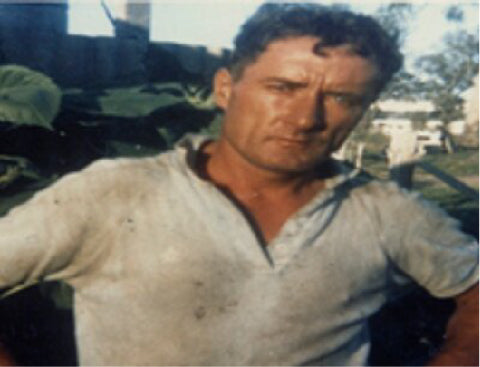
Return To England
In the mid-1970’s, after working in Australia, New Zealand and for a short time in Canada, Christopher, who had become a perpetual traveller, joined his twin brother for a return to life in England. Christopher’s varied work experience has encompassed laying railway lines, farming, prospecting for gemstones and psychiatric nursing.
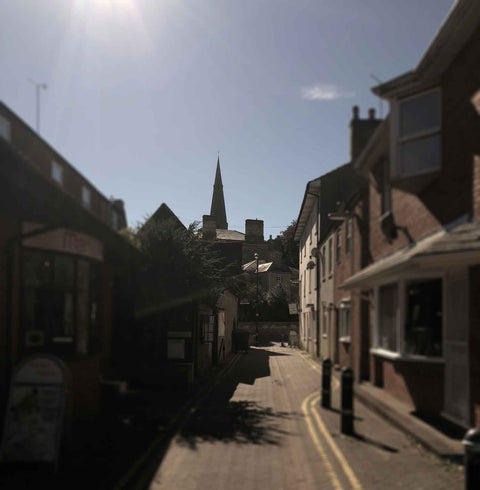
Post Ischemic Stroke Life
In 1979, shortly after his return to England, Christopher suffered from an Ischemic Stroke which left him partially paralysed on the left-hand side of his body. After a long period of rehabilitation, Christopher moved to the English town of Leighton Buzzard, where he was cared for by his twin brother and from where he continued to paint. There was a noticeable change in the style of his painting, which took on an increasingly religious theme. In Leighton Buzzard, he spent considerable time carrying out voluntary work and art lessons for those affected by disability and who would frequent the local day care centre.
Soon after moving to Leighton Buzzard, Christopher became a distinctive character, frequently seen with his sketchbook and pencil, with his distinguishable post-stroke walk, often a cigar in hand and known to many. As a practicing Christian, he was a regular attendee at All Saints Church. Many of his watercolour and oil paintings, some one-thousand of them in total, many of which were painted in Leighton Buzzard, feature memories of his life in China, Sarawak, Australia and England.
Some suggested that Christopher had suffered from schizophrenia, while others, particularly those abroad, had suggested he might have retained his good health and fitness should he continued the active lifestyle in the Australian outback that he so clearly enjoyed. Christopher’s physician in Leighton Buzzard stated that the treatment of victims of stroke has significantly progressed over the years with recovery prognosis continually improving, while also noting a commonality for stoke victims to experience feelings of irritability, forgetfulness, carelessness or confusion and feelings of anger, anxiety or depression. Many of these psychological attributes may be seen within his later paintings.
When looking at Christopher’s paintings closely, one can often also see symbols of calmness, hope, kindness and love which counter scenes considered as dark by some.
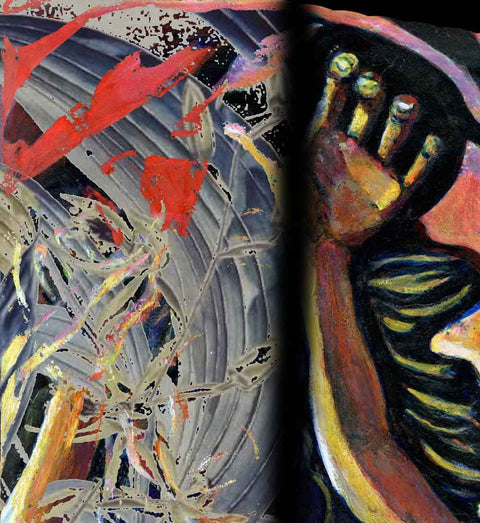
Recurring Themes
There are recurring themes within Christopher’s paintings, many of which illustrate notes in the journals he had written over a span of three decades. With his ever by his side William Mitchell dip pen and bottle of Winsor & Newton Indian ink, a notebook was only always within arm’s reach.
Christopher depicts periods of despondency from the time he resided at the Church Army hostel for the homeless in Oxford, an era from where many of his portraits of individuals who had stories of having been treated with great cruelty or having suffered grave personal hardship to share were painted; to the time he suffered from his ischemic stroke, leaving him hospitalised and frustrated. His journals frequently mention the twin brother, with whom he would travel the world extensively and who was later to become his full-time carer. Behind one watercolour portrait of his brother, Christopher refers in his notes to “My dear identical twin. Carer, confidant and friend. For being a twin I am blessed“.
While some have said that Christopher’s religious art illustrate thoughts considered particularly dark and possibly even morose, others have seen a deeper substance of hope and spirituality. He illustrated few cityscapes and landscapes, possibly due to his limited mobility, reliance on public transport and need for home care. Many of his expressionism and genre scene paintings depict images of courage and joy, which he claimed to be manifest from his Christian faith. Almost all of his works include a short explanatory caption on the back of the painting; Christopher recalled the time when one of his friends with whom he would work on the Queensland railways was fatally injured by a piece of railway track that has been dropped “Working in the Queensland heat one had to be careful if a piece of railway track were to be dropped by the gang. Dropped track would jump and wriggle like rubber causing great injury to anyone nearby. We would regularly take ‘smoko’ breaks and discuss each other’s backgrounds and origins”.
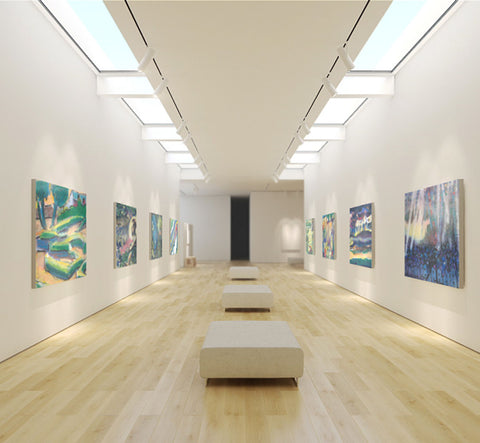
Christopher's Legacy
Christopher suffered from a major intracerebral haemorrhage shortly before Christmas in 1986 which left him totally paralysed. He died at Stoke Mandeville hospital near Aylesbury, England on 31 December 1986, aged 56 years and in accordance with his wishes was buried at Vandyke Road Cemetery. His twin brother, George, died on 12 September 2009 in Oxford. He is survived by his sister Mary Kirnig (Née Blake) who was born several years after the family returned to England from China. Mary, a retired Opera singer and singing teacher, continues to live in Oxford, England.
Scenes of opal mining at Lightning Ridge and rural Australia featured regularly in Christopher’s paintings long after he had returned to England and he would often recount stories of his adventures to friends and family about his life in Australia. His twin brothers last wish was to be laid to rest in Lightning Ridge, besides the New South Wales opal field of the ‘9 Mile’ that he and Christopher were so fond of. From time to time, his nephew, James, visits Lightning Ridge with his wife to try their luck in the search of the precious gemstones famed for their fire-like array of colour.
Entrusting his collection of paintings to his nephew James, Christopher hoped that his work may be exhibited for others to appreciate and to learn from his experiences. To meet with his wish, this website was created to help display the Christopher Blake Art Collection and make his paintings available for all to enjoy.
